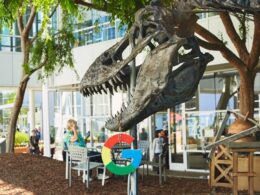Tesla CEO Elon Musk has revealed the company’s highly anticipated robotaxi, the Cybercab, at Warner Bros Studios in Burbank, California. This futuristic vehicle, equipped with two wing-like doors and lacking both pedals and a steering wheel, brought Musk to a crowd eager for updates on a project he considers pivotal to Tesla’s future.
At the “We, Robot” event, Musk emphasised his belief that fully autonomous vehicles will eventually be safer than human-driven cars and could even generate revenue for owners by being rented out. However, investors does not seem to share the enthusiasm, as Tesla’s stock price dropped by over 8% after US markets opened on Friday, settling around $219 by 11:45 a.m. Eastern Time. Meanwhile, shares in ride-hailing competitors Uber and Lyft, who also have autonomous vehicle plans, rose by up to 10%.
Musk’s prediction that Cybercab production would start “before 2027” has sparked skepticism, given his history of missed deadlines. “I tend to be optimistic with time frames,” he joked during the event. He claimed that Cybercab would be priced at under $30,000 (£23,000), but analysts are doubtful. Paul Miller of Forrester noted that achieving that price without subsidies or losses would be “extremely difficult.”
Musk also stated that “fully autonomous, unsupervised” technology could be available in Tesla’s Model 3 and Model Y in Texas and California next year, pending regulatory approval. However, Samitha Samaranayake, an associate professor at Cornell University, voiced safety concerns, noting that autonomous vehicles, especially large ones traveling at high speeds, present significant risks.
Tesla’s self-driving system relies on AI trained through data collected from its fleet, using cameras instead of more costly radar or Lidar sensors. But experts remain uncertain about whether Tesla’s approach can provide the desired safety guarantees.
The Cybercab project has faced delays, originally slated for release in August. Musk attributed the postponement to important design changes. Meanwhile, rival robotaxis are already in operation in parts of the US.
Despite facing potential declines in annual sales due to increased competition in the electric vehicle market, Tesla made the event a spectacle. Humanoid robots danced and served drinks, while Musk introduced another prototype, the “Robovan,” capable of transporting up to 20 passengers. Wedbush Securities’ Dan Ives, who attended the event, suggested that this shuttle could become a viable transportation mode for Tesla in the near future.
Jessica Caldwell, head of insights at Edmunds, praised Musk for envisioning a future where transportation is safer and more time-efficient but raised doubts about whether the vision could be realized practically.
The robotaxi market has experienced setbacks, including the suspension of General Motors subsidiary Cruise’s driverless cars in San Francisco after an accident involving a pedestrian. However, the industry continues to grow. Waymo, in early October, announced plans to add the Hyundai Ioniq 5 to its fleet, and Uber is expanding its autonomous vehicle options through a partnership with Cruise. Chinese tech company Baidu is also exploring opportunities to expand its robotaxi division, Apollo Go, beyond China, where it already operates in several cities.






















